Excerpts from Jim Conrad's
Naturalist Newsletter
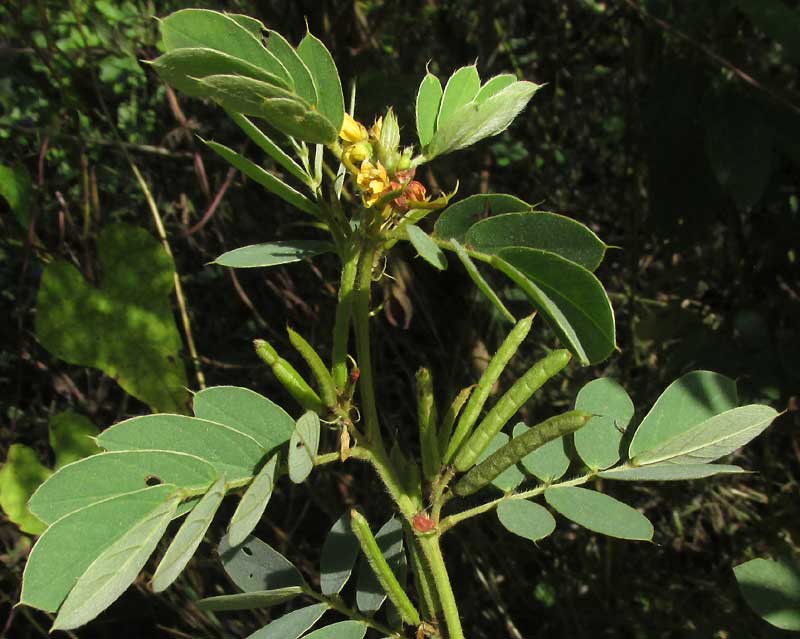
from the January 24, 2016 Newsletter issued from Hacienda Chichen Resort beside Chichén Itzá Ruins, central Yucatán MÉXICO
"LITTLE PEANUT"
A mostly knee-high plant, an herb bordering on being a woody bush, or the other way around, is making an appearance along our roadsides nowadays. Below, you can see its pinnately compound leaves:
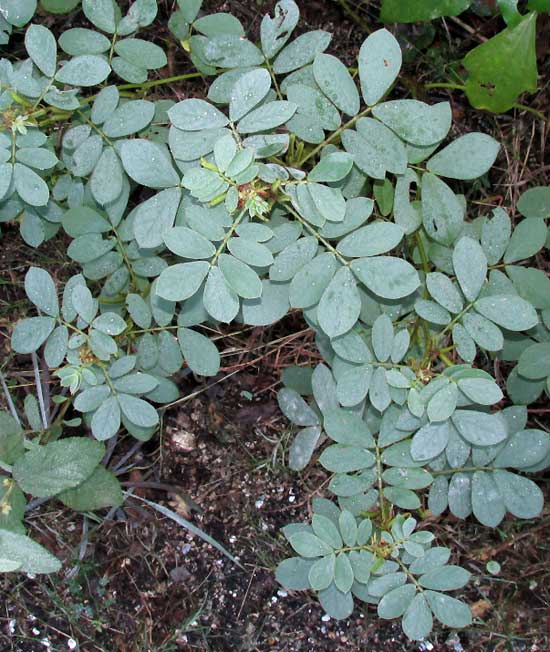
Pinnately compound leaves fall into two big groupings: Those with a single leaflet at the end of the midrib, or rachis, so that the leaves consist of an odd number of leaflets, and; those without a leaflet at the midrib's tip, so that there's an even number of leaflets. Leaves in the picture mostly have eight leaves, with no leaflet at the midrib's tip. With pinnate leaves, this is always something to notice.
The plants are producing clusters of legume-type fruits held upright like slender fingers or claws of a hand, as shown at the top of this page. A feature worth noting about the legumes is the series of regular, narrow constrictions between the beans, giving the fruits a segmented look. And of course any plant with legume-type fruits and compound leaves such as these just has to be a member of the Bean Family, so already we're that far with identification. A look at a flower further directs us toward a very common Bean Family genus, as shown below:
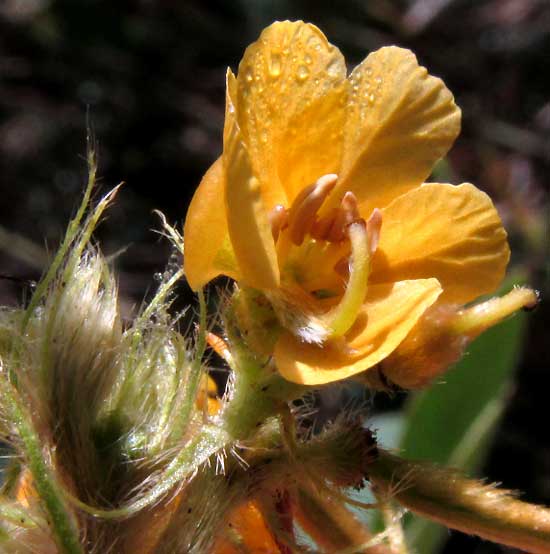
The blossom is almost symmetrical, but the two lower petals are slightly larger than the others, and the stamens are of different sizes, and directed upward, while the curved style swoops downward, then up. The flower is bilaterally symmetrical in exactly the way of blossoms in the big genus Senna, of which we've already found several species here. The above picture also shows that a good field mark for this species is its abundant hairiness. A side view showing that the calyx below the flower consists of large, scoop-shaped, round-pointed sepals yellow on their margins but greening toward their centers is shown below:
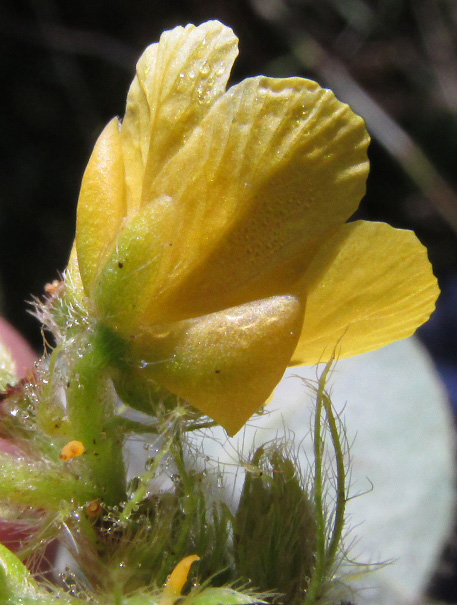
Since we've seen so many species of the genus Senna, we know that an important field mark for distinguishing the species is whether or not conspicuous glands occur on the leaves' petiole or rachis. This species has them on its rachises, and they are unusual and spectacular, as shown below:
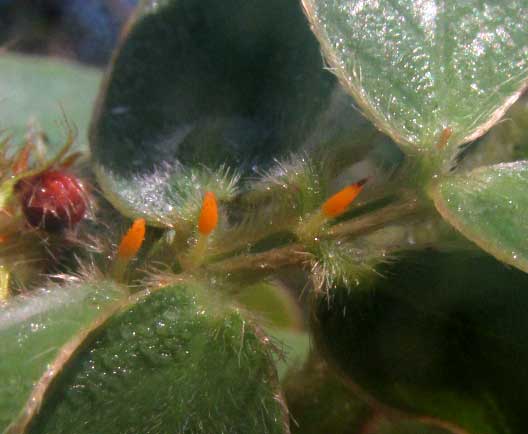
As the leaves age, these glands disappear, maybe eaten by ants or maybe just falling off. One botanical description found refers to the glands as nectaries, indicating that they produce nectar, though to me they look more like they are providing food to ants, who will bite animals nibbling on the plant.
This is SENNA UNIFLORA, a fairly common weed from northern South America all through Central America north to Mexico and the Caribbean, plus it's invading various other tropical countries, particularly India. There's no good English name for it, though in Mexico it has many, maybe the most commonly used being Frijolillo (Little Bean) and Cacahuatillo (Little Peanut). In Spanish, the suffix "-illo" means "little."
I read that the roasted seeds are used as a coffee substitute, and in traditional medicine the hairy leaves are used as poultices for wounds. The roots serve against dropsy.